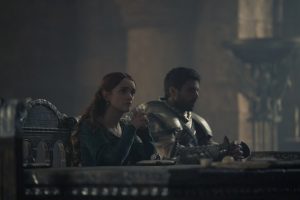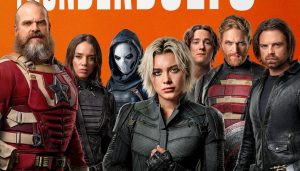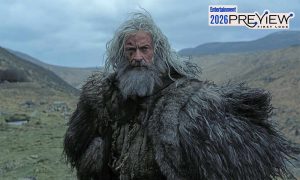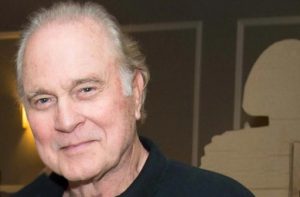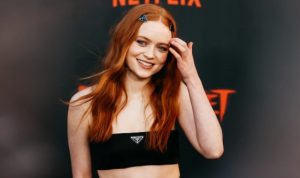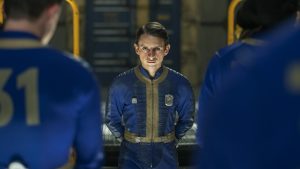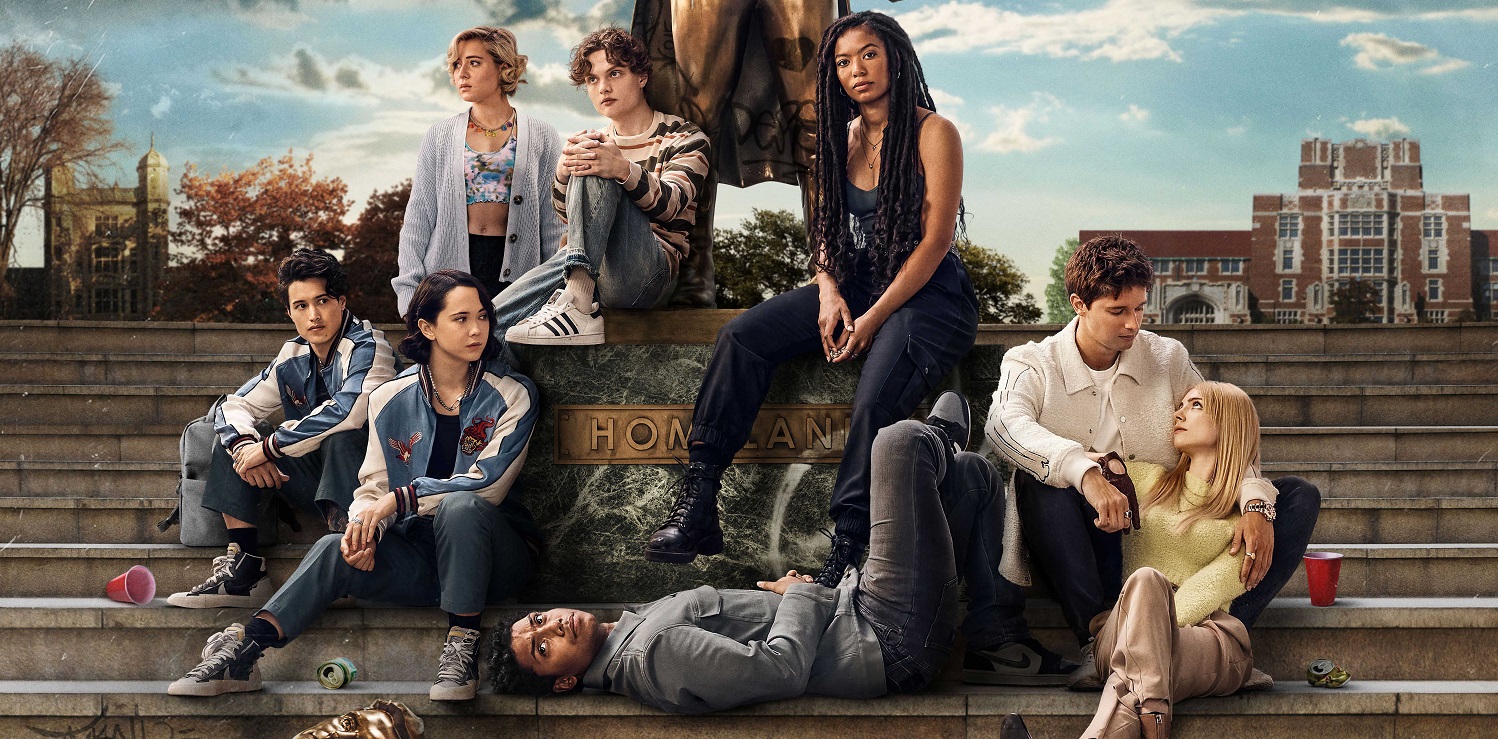
A teenage girl excuses herself from a family activity in the living room. When she gets to the bathroom, she discovers that she has begun puberty, a confusing and frightening situation for anyone. But matters get worse when the girl realizes she can control her blood, making it fly and move in the air.
When her loving mother, concerned that she’s experiencing the normal bodily changes of a young woman, knocks on the door, the girl freaks out. She sends a glob of blood at her mother, slicing her throat. When her father rushes in and asks what happened, the girl panics again and uses blood to kill her father. The scene ends with the girl huddled in the corner, terrified of what she’s become.
In another story, a frail teen enters his father’s stately bedroom to find him dead, shot by the recently fired groundskeeper. A berserker rage overtakes the teen and he hurls himself at the groundskeeper, punching the man in the stomach. At first, the teen’s weak fists do no harm to the groundskeeper. But suddenly, a look of shock falls over the man’s face, and the boy pulls back his hand to see three bone claws protruding from his heretofore weak knuckles.
Most know that the latter tale is the origin of James Howlett III, the man who would later be known as Wolverine of the X-Men. And if you’ve been watching Gen V, the spin-off of The Boys, you know that the former appears in that series’ premiere episode, spotlighting Jaz Sinclair’s supe Marie Moreau.
Gen V sure does owe a lot to Marvel’s Merry Mutants, borrowing tropes about young people learning to control their powers, and the wider world’s complicated feelings about them. But as these themes get twisted by The Boys’ cynical worldview, Gen V only underscores everything special about the X-Men.
All-New, All-Different Comic Book Youths
To hear Stan Lee tell it, the X-Men were created simply because he grew tired of coming up with explanations for superpowers. While that may be a bit of Lee’s characteristic mix of self-depreciation and self-aggrandizement, it does sum up the team’s core appeal. When he and Jack Kirby debuted the team — then consisting of Cyclops, Marvel Girl, Iceman, Beast, and Angel — in 1962’s X-Men #1, they introduced the idea of mutants. More importantly, they introduced the concept that regular people feared and hated these mutants, in part because guys like Magneto thought mutants should rule the Earth.
While the book floundered initially, the X-Men hit its stride under writer Chris Claremont who, with a number of super-star artists, took full advantage of the metaphorical implications of mutants. As the X-Men became Marvel’s most popular characters and launched a fleet of spin-offs, Claremont and his collaborators — including Louise Simonson, John Byrne, and Jim Lee — used mutants as a civil rights allegory, in which the mutants stood in for every oppressed group.
At the center of it all was Charles Xavier, the powerful mutant telepath who founded Xavier’s School for Gifted Children. Yes, Professor Xavier could be a jerk, and yes, his recent black leather/obtuse helmet aesthetic earns the trust of no one. But by and large, he’s been presented as a man with good intentions, who has devoted himself to training the next generation of mutants and creating a world in which humans and mutants can peacefully coexist.
Garth Ennis made his version of Xavier into a paedophile. In the world of The Boys comics by Ennis and Darick Robertson, the Professor X stand in is Professor G, psychologist John Godolkin, who enjoys a special arrangement with the Vought corporation. When children injected with Compound V manifest their powers around puberty, Godolkin takes them into his home to begin training, which involves molestation and brainwashing.
Godolkin and his various teams of Supes debuted in The Boys #23, in a story that saw Hughie infiltrating the college-aged group Gee-Whiz in hopes of bringing Godolkin down. The six-issue arc revealed Godolkin and his charges to be racist, sexist, homophobic sex fiends who perpetrated all manner of unspeakable things on each other and regular people, before dying in a horrific battle.
This storyline served as the inspiration for Gen V, which (thankfully) removes the molestation plot and reduces John Godolkin to just the namesake of the central school Godolkin University. But even as it moves away from the X-Men parody in the comics, Gen V still manages to highlight the importance of the X-Men as a storytelling concept.
Cynical Heroes: The Next Generation
As with the mainline series The Boys, Gen V performs a minor miracle by finding something smart and empathetic within the comic’s tiresome provocations. Despite the trauma of her powers manifesting, Marie Moreau remains a sympathetic character. She legitimately believes that the Seven and other Supes do good and that ethos drives her to succeed at Godolkin University. Yes, the series does include some of The Boys’s signature gross-out gags, including a scene in which Marie engorges a would-be rapist’s penis until it explodes, but it also finds moments of emotional vulnerability for most of its characters.
Moreover, Gen V follows The Boys in using superpowers as a metaphor for the obsession with power in our current political and social climate. Gen V accurately imagines higher education as little more than a training ground for the capitalist rat race. Students learn how to reinforce a social structure that consolidates power to an elite few, ensuring compliance through a series of carrots in the form media coverage, acknowledgment from respected figures, or moral superiority performed online, and sticks, most obviously in the form of a secret facility dubbed The Woods.
Take, for example, a Godolkin Town Hall meeting shown in the first season’s penultimate episode. Hosted by the Tucker Carlson-esque Cameron Coleman (Matthew Edison), the Town Hall allows the young Supes-in-training to ask questions of Vice Presidential hopeful and Alexandria Ocasio-Cortez stand-in Victoria Neuman (Claudia Doumit). Neuman’s platform involves regulations for Supes, something that Coleman considers un-American, limiting their freedom. According to Coleman, the only thing that can stop a bad guy with superpowers, specifically Homelander and Soldier Boy, is a good guy with superpowers.
While the gun control allegory holds, the metaphor gets muddled when Neuman states that a law-breaking Supe will be subject to a trial and a jury of their peers. “Humans are not our fucking peers,” shouts a young man in a red hat. “Supes’ lives matter!” another adds. Neuman still talks about most Supes being “law-abiding citizens” and “common sense solutions,” but when the red-hatted youth starts chanting “You will not control us,” the scene devolves into a mass of signifiers ripped from the headlines, with no discernible point.
X-Men Forever
To be fair, the controlling metaphor of the X-Men doesn’t always work either. First of all, having a mother ask Bobby Drake (Shawn Ashmore) “Have you ever tried not being a mutant?” as seen in X2: X-Men United doesn’t explore homophobia as well as making Iceman an openly gay character, as he is in current X-Men continuity. Secondly, while a few ugly and disadvantaged mutants do make their way to Xavier’s School (looking at you, Beak and Eye-Boy), most are incredibly good-looking people who have the ability to level a building with their minds.
However, the Town Hall scene in Gen V really highlights the limitations of The Boys exploration of the issues. For all its effective satire, Gen V cannot really do much more beyond that. It fails when trying to visualize hope, empathy, or heroism.
The X-Men, however, can do all of these and more. The registration argument used in the town hall scene from Gen V has many antecedents in X-Men comics. But where Gen V must turn the conversation toward Trump-style fascism, X-Men allows space for showing a scared pre-teen who learns that they have become an enemy of the state simply for existing. Nothing demonstrates this better than a small ad that ran throughout Marvel Comics in 1987. The black and white, rectangular ad showed portraits of four children below a headline that read “It’s 1987. Do you know what your children are?” Over the fourth portrait is the word “Mutie” scrawled in red.
Despite these fears, the franchise has found notes of grace and humor. The Alex Ross painted cover to issue #2 of the Kurt Busiek series Marvels depicts the mutant Angel at his most celestial, whisking away a mutant child from an angry crowd. Numerous stories involving Nightcrawler have seen the demonic-looking German cheerfully turning away those who would attack him, finding support in his good humor and religious faith.
The most recent X-Men comics take an audacious new approach to the long-standing franchise, seeing the mutants assert their national sovereignty on the island nation of Krakoa. Since the 2019 miniseries Powers of X and House of X, both written by Jonathan Hickman, the X-Men have explored the challenges facing an oppressed people who gain self-rule, learning how to live peacefully, but with dignity, on the world stage.
There’s nothing to say that Gen V couldn’t tell similar stories about its compelling roster of youthful Supes. But it would be a major deviation from the mainline series, even bigger than the television adaptation’s turn from the comics. The X-Men bake all these aspects and more into the central premise, making them, once again, the most relevant superhero series of our time.
The post Gen V Has Made the X-Men More Relevant Than Ever appeared first on Den of Geek.
